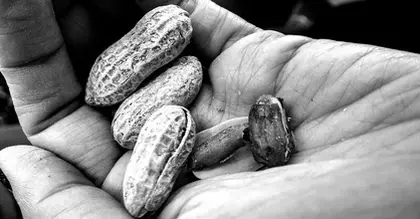
- Experts are interested in finding what factors contribute to cardiovascular disease and diabetes and what can help with prevention.
- One recent study highlighted that sugar-sweetened beverages may contribute to almost 10% of type 2 diabetes cases and over 3% of cardiovascular disease cases.
- There are a number of potential action steps that may help limit people’s consumption of sugary beverages.
Addressing the problems of cardiovascular disease and diabetes remains a key area of research and health intervention.
A recent study published in
The researchers found that in 2020, sugar-sweetened beverages were responsible for an estimated 9.8% of type 2 diabetes cases and 3.1% of cardiovascular disease cases worldwide. The data further explored which regions, countries, and individuals were most affected by sugar-sweetened beverage consumption.
Sugar-sweetened beverages like sodas remain a popular drink choice despite the potential risks. Study authors point out that consuming sugary sweetened beverages contributes to type 2 diabetes and cardiovascular disease (CVD), as well as weight gain.
Researchers wanted to look more at how sugar-sweetened beverages contribute to disease at the global, regional, and national levels.
First, researchers used the Global Dietary Database to examine the consumption of sugar-sweetened beverages. This database contained data from 2.9 million people across 118 countries, which the authors note represents 87.1% of the global population.
Researchers included any drink with added sugars and more than fifty Calories in an eight-ounce serving as a sugar-sweetened beverage. Researchers excluded beverages that were 100% fruit or vegetable juices, sweetened milk, and noncaloric drinks that used artificial sweeteners.
On average, people consumed just over two and a half eight-ounce sugar-sweetened beverages each week, with variation across regions and countries. For example, people in South Asia only had an average of 0.7 sugar-sweetened beverages a week, while people in Latin America and the Caribbean had an average of 7.3 sugar-sweetened beverages a week. People in Colombia had an average weekly consumption of 17.4 sugar-sweetened beverages, while people in China, India, and Bangladesh only had 0.2.
In general, men consumed more sugar-sweetened beverages than women, and younger people tended to consume more sugar-sweetened beverages than older individuals. Education level appeared to impact consumption differently in different regions.
Next, researchers were able to look at incidences of CVD and type 2 diabetes and how much of this could be attributed to sugar-sweetened beverages.
Researchers estimated that around 2.2 million new cases of type 2 diabetes and 1.2 million new cardiovascular cases were attributable to the consumption of sugar-sweetened beverages. They further estimated that consuming sugar-sweetened beverages caused 5.1% of deaths from type 2 diabetes and 2.1% of deaths from CVD.
Different countries were affected differently. For example, Mexico, Colombia, and South Africa had the highest amount of type 2 diabetes and CVD cases that were attributable to sugar-sweetened beverages. Regionally, Latin America and the Caribbean were most affected. About 24% of new type 2 diabetes cases and about 11% of new CVD cases were attributable to sugar-sweetened beverages in Latin America and the Caribbean.
Globally, researchers estimated that sugar-sweetened beverages were more likely to cause type 2 diabetes in men, people with higher education, and those in urban areas. For CVD, the impact of sugar-sweetened beverages was higher for men and people in urban areas because of higher consumption and baseline risk for CVD.
The proportional risk for type 2 diabetes and CVD from sugar-sweetened beverages was higher for younger individuals in their twenties.
Researchers also noticed a global increase of 1.3% in cases of type 2 diabetes attributable to sugar-sweetened beverages from 1990 to 2020, with the sub-Saharan Africa region experiencing the most increase. There was also a slight global decrease in cases of CVD attributable to sugar-sweetened beverages.
Overall, the study highlights the potential impact of sugar-sweetened beverages all over the world, providing insights into the regions and countries that are most affected.
This data does have limitations. It relied on survey data on beverage consumption, which can contain inaccuracies. There is also a certain bias risk from some dietary collection methods that researchers were able to address in part with their hierarchical Bayesian model.
The researchers lacked data on sweetened teas, which could have led to an underestimation of their impact, particularly in Asia. The global dietary surveys usually didn’t look at sugar-sweetened coffee or tea. The Global Dietary Database only contains data from 118 countries, but researchers were able to look at the incidence of type 2 diabetes and CVD in 184 countries, and this could have affected the results. There was also limited dietary data for some time periods and countries.
Researchers also considered data about the direct effects of sugar-sweetened beverages and the body mass index “mediated etiologic effects” of the drinks.
Authors acknowledge that data on the etiologic effects of sugar-sweetened beverages on type 2 diabetes, CVD, and weight gain mainly came from high-income countries, particularly when it came to weight gain data. Thus, these data might not accurately represent other populations. They also note that there was insufficient evidence to vary their risk estimates by some population characteristics.
This study is not exact; instead, it involves estimations. Researchers note that their study cannot prove cause and effect and that the findings are based on “available data and reasoned assumptions.” They note that it’s important to consider estimated uncertainty ranges when looking at certain national data. There is a risk for residual confounding and publication bias, and the data did not look at other harms of sugar-sweetened beverages.
Overall, the research emphasizes the need to address the consumption of sugar-sweetened beverages.
Study author and postdoctoral scholar in the Cardiovascular Health Metrics Program at the Institute of Health Metrics and Evaluation at the University of Washington Laura Lara-Castor, who helped conduct the research as part of her doctoral studies at the Friedman School of Nutrition Science and Policy at Tufts University, noted the following to Medical News Today:
“If we do not act promptly with strategies to decrease SSB [sugar-sweetened beverage] intakes, we will see a continued rise in the attributable cardiometabolic burdens. This will continue to impose not only a decreased quality of life of the people with the disease and their caregivers, but also to the countries’ economy, given a decreased individual productivity and increased medical expenses.”
There are a number of potential strategies that could limit people’s intake of sugar-sweetened beverages.
Cheng-Han Chen, MD, a board certified interventional cardiologist and medical director of the Structural Heart Program at MemorialCare Saddleback Medical Center in Laguna Hills, CA, who was not involved in the study, explained:
“There will need to be coordinated public-policy efforts around the world to limit sugary drink intake. As this study shows, sugary drink intake differs in different parts of the world by various demographics. This provides an opportunity to enact targeted public policies depending on the region to improve health outcomes.”
People can also act at the individual level to be careful about the beverages they consume. Karen Z. Berg, a registered dietitian nutritionist, who was also not involved in the study, noted the following:
“I always recommend that people avoid drinking their calories and instead, just opt for water. Homemade unsweetened iced tea or sparkling waters are also okay to consume in moderation, but sugary beverages really have no place in a healthy diet.”
“There are two ways to drink less soda and avoid sugary beverages. You can make a serious effort to give these things up cold turkey and just stick to water, or you can do so gradually. I think flavoring seltzer with fresh or frozen fruit is a great way to get the carbonation people crave, with some flavor you can feel good about.”
— Karen Z. Berg, nutritionist





